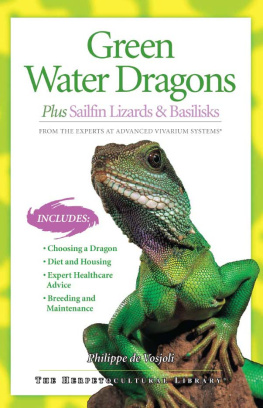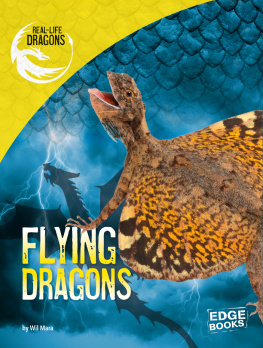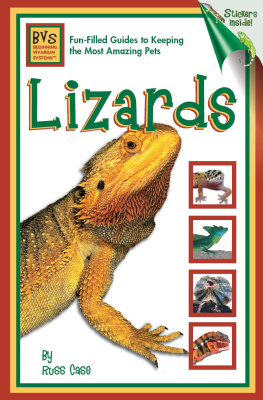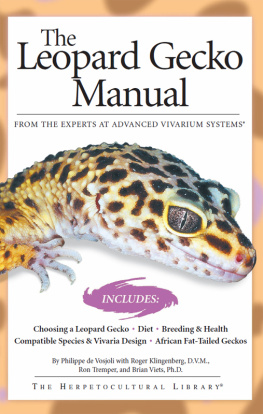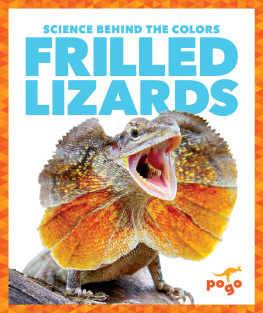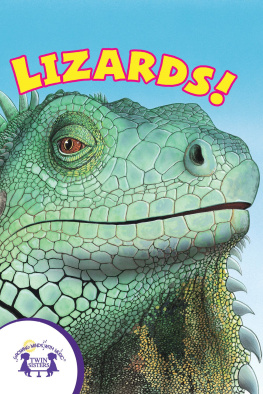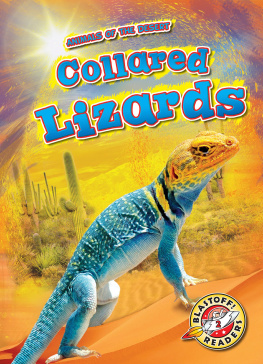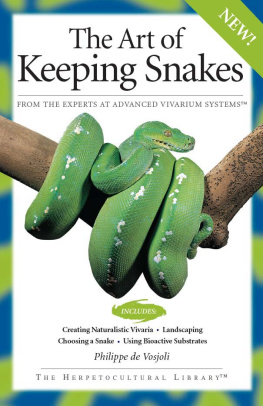Vice President, Chief Content Officer: June Kikuchi
Vice President, Kennel Club Books: Andrew DePrisco
Production Supervisor: Jessica Jaensch
Production Coordinator: Tracy Burns
I-5 Press: Jennifer Calvert, Amy Deputato, Lindsay Hanks
Karen Julian, Elizabeth L. McCaughey, Roger Sipe, Jarelle S. Stein
Designed by Michael Vincent Capozzi
Indexed by Rachel Rice
Cover photo by David Northcott.
The additional photographs in this book are by Philippe de Vosjoli, pp. 6, 32, 33; Jim Bridges, p. 7; Paul Freed, pp. 8, 26, 27, 34 (bottom), 41, 44; Zig Leszcynski, pp. 9, (top, courtesy of Alan Both), 34 (top), 47, 50; David Northcott, pp. 9 (bottom), 10, 39, 42, 49; Isabelle Francais, pp. 12, 13; Bill Love, pp. 18, 46; R. D. Bartlett, pp. 45.
Copyright 1992 by Advanced Vivarium Systems
All rights reserved. No part of this book may be reproduced, stored in a retrieval system, or transmitted in any form or by any means, electronic, mechanical, photocopying, recording, or otherwise, without the prior written permission of Advanced Vivarium Systems, except for the inclusion of brief quotations in an acknowledged review.
LCCN: 96-183295
ISBN-10: 1-882770-69-2
ISBN-13: 978-1-882770-69-4
eISBN-13: 978-1-620080-35-1

An Imprint of I-5 Press
A Division of I-5 Publishing, LLC
3 Burroughs
Irvine, CA 92618
www.facebook.com/i5press
www.i5publishing.com
We want to hear from you. What books would you like to see in the future? Please feel free to write us with any comments on our AVS books.
Printed and bound in China
14 13 12 11 10 5 6 7 8 9 10
Special thanks to Chris Estep for photographs of his water dragon breeding colony and to Chris Lindberg for sailfin lizard photographs and information.
CONTENTS
INTRODUCTION
T he 1990s marked a revolutionary breakthrough in the popularity of reptiles. During this Decade of the Dragon, larger Asian and Australian members of the family Agamidae, popularly called dragons, became readily available and established in herpeto-culture. Their natural tameness and captivating appearance caused them to soar to the top of the exotic pet charts. As a result, several of these dragons are now captive bred in considerable numbers. By far, the most popular is the inland bearded dragon, a desert species that is destined to overcome the green iguana as the second most widely kept lizard in America (the first is the green anole). Following the bearded dragon in popularity is the subject of this book, the green water dragon, a remarkable species currently imported by the thousands from Southeast Asia. These spectacular animals offer many of the good qualities of green iguanas with fewer problems.
Indeed, green water dragons have a lot going for them. They only grow half as long as green iguanas and, although they only achieve a total length of 2 to 3 feet, they are substantial lizards that are much more easily accommodated in indoor facilities. Their attractive appearance combines heavy-bodied proportions, bright green to blue green coloration, a large head, and large eyes, characteristics that appeal to a large number of first time reptile owners. One of their nicest features is their docility. Once established, the great majority of water dragons become calm and tame. Unlike green iguanas, they are not prone to biting or tail-whipping as a defensive behavior and their temperament remains consistent, even after theyve reached sexual maturity. Their carnivorous habits also make them less susceptible to diet-related diseases than the primarily herbivorous green iguana. For those interested in their commercial possibilities, another great characteristic of green water dragons is that they readily breed in captivity. This makes them a potentially sustainable resource and can help reduce collection of wild specimens. As youve probably figured out, I have nothing but high praise for this special lizard.
This book also covers other groups of lizards that are called dragons and generally found near water, including the Australian water dragon, a beautiful species related to green water dragons, and sailfin lizards. The latter are the largest members of the family Agamidae and, in appearance, the species that most closely resemble the mythical dragons pictured in medieval paintings. As pets, all of these species generally have similar requirements.
Basilisks, the New World lizards most closely related to iguanas, are also imported in fair numbers for the pet trade. I included them in this book for two reasons. First, they are extremely dragonlike in appearance and, second, their requirements are almost identical to the other species covered here. Although their nervousness and tendency for flight have kept them from being as popular as bearded dragons and green water dragons, for serious keepers, few lizards are more impressive display animals.
With the exception of sailfin lizards Hydrosaurus, which I consider a specialist species, the lizards covered in this book are among the finest available for keeping indoors. I think any prospective owner, just as I have, will find great rewards in the daily observation and care of these remarkable tropical lizards.
CHAPTER 1
GENERAL INFORMATION
D espite their protected status in several countries, green water dragons are still imported in large numbers for the pet trade. This is not altogether surprising, considering these semi-arboreal Asian reptiles are among the best large lizard pets available. They are attractive, can be handled, and display well. Most adapt well to captivity and readily breed in proper captive conditions. They do not grow nearly as large as green iguanas and tend to be somewhat calmer. Iguanas often display more responsive behaviors and more signs of intelligence than water dragons, but a somewhat less responsive personality has certain advantages. Green water dragons are less likely to become stressed when moved to a new enclosure. Unlike iguanas, they can also be displayed in large, attractive, planted vivaria and are less likely to damage landscaped plants and materials than most other large lizards.

Male green water dragons can eventually grow large enough to require enclosures at least 5 feet long. If raised from babies, many become quite tame and will not smash their snouts on the cage walls, a behavior common in larger imports.
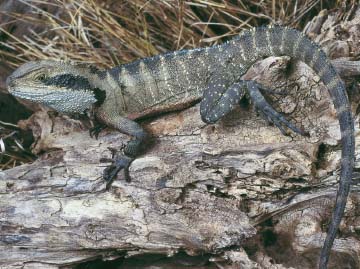
Australian water dragons (Physignathus lesueurii), like this male, are bred in very small numbers in the United States. Proper winter cooling, with temperatures dropping into the low 60s F at night, is necessary for successful breeding.
In scientific nomenclature, green water dragons are classified as Physignathus cocincinus, one of the largest members of the Old World family Agamidae. Two other Physignathus species are occasionally offered in the herpetocultural trade: the Australian water dragon, Physignathus lesueurii, and the small Southeast Asian Physignathus temporalis.
Distribution: Green water dragons are found on the mainland of Southeast Asia and the Indo-Australian archipelago. Most imported specimens are from Thailand or southern China.
Size: Large male water dragons can reach more than 3 feet in total length. Females are typically smaller.
Next page
